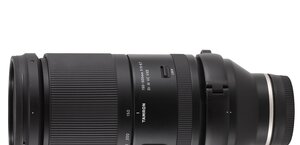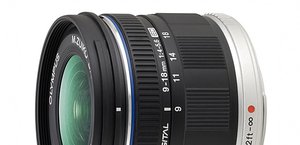Samsung NX 60 mm f/2.8 Macro ED OIS SSA
3. Build quality and image stabilization
Then we can compare the tested lens to other macro 60 mm focal length instruments designed for reflex cameras with APS-C/DX sensors. It is presented in the next chart.
In the photo below you can see the tested Samsung standing next to the 2/30 “pancake” and the ‘kit” 20-50 mm. It’s obvious that the tested instrument is not very big and it fits quite well such bodies as the NX5, NX10 or NX11. It would suit also such smaller cameras as the NX 100 and the NX200.
Please Support UsIf you enjoy our reviews and articles, and you want us to continue our work please, support our website by donating through PayPal. The funds are going to be used for paying our editorial team, renting servers, and equipping our testing studio; only that way we will be able to continue providing you interesting content for free. |
- - - - - - - - - - - - - - - - - - - - - - - - - - - - - - - - - - - - - - - - - - - - - - - -
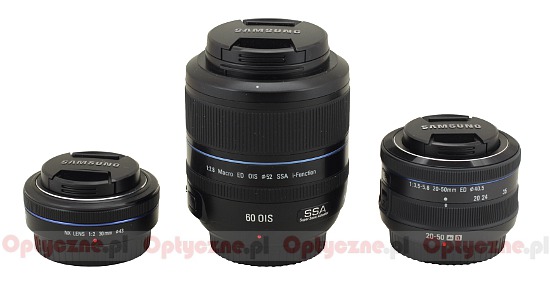 |
The lens starts with a metal mount with contacts – it surrounds a rear element, 23 mm in diameter. The element is immobile and positioned almost on the same level as the mount.
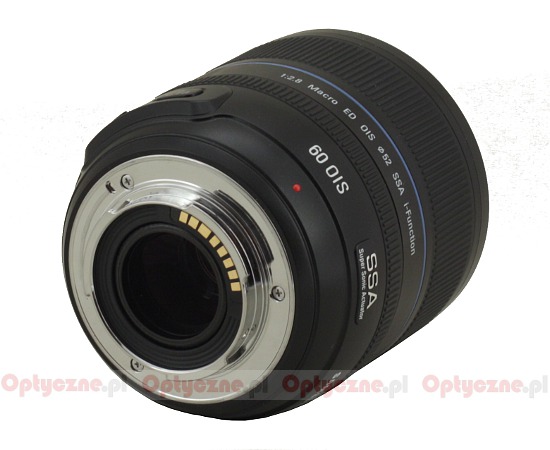 |
The body of the lens makes a very good impression – it is solid and compact. We deal here with metal parts covered by good quality plastics. The lens begins with an inscription “60 OIS” near the mount, stating the focal length of the lens and indicating that optical stabilization was used here. On the right there are big SSA letters - they mean Super Sonic Actuator so a type of an ultrasonic autofocus mechanism. On the left there is an i-Function button; pressing it you can change the basic parameters like the aperture value, the exposure time or ISO. Under it there is a FULL/LIMIT switch, used to limit the working range of the focusing mechanism. However nowhere on the casing you can find any information about the values it can be limited to. There is also no image stabilization mode switch or a depth of field scale.
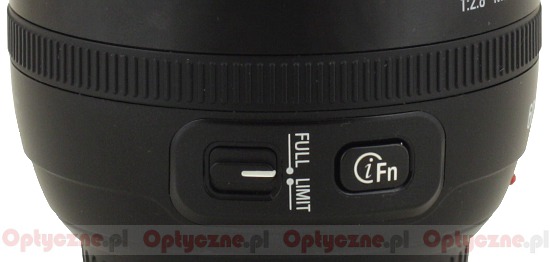 |
The next element is a thin (8 mm) and ribbed ring without any markings. It is used to change the parameters, chosen by the I-Function button. While you keep the button pressed you can turn the ring and change the value of a given parameter.
The next part of the body is made of metal and includes the name and the parameters of the lens along with a blue stripe, characteristic for Samsung lenses.
Further on you find a manual focus ring, 21 mm wide and ribbed. It comes without any distance or depth of field scale but it works properly, is well damped and allows you precise settings. Running through the whole distance scale takes a turn through 180 degrees. The ring is completely manual, without any electronic transmission.
At the very front of the lens you can see a hood thread, a non-rotating filter thread, 52 mm in diameter and an immobile front element, 21 mm in diameter. If you work in the 1:1 macro mode that front element is situated about 9 cm from the photographed object.
The lens consists of 12 elements positioned in 9 groups. One element was made of low dispersion ED glass and one is aspherical. Inside you can also find an aperture with seven diaphragm blades which can be closed down to f/32.
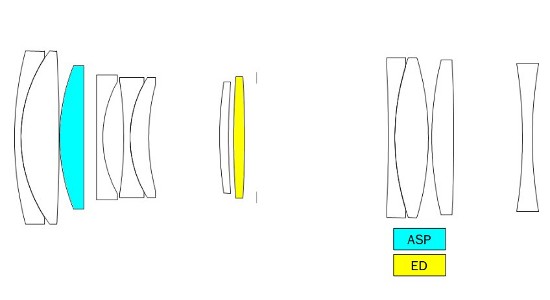 |
Buyers get both caps, a hood and a soft pouch in the box.
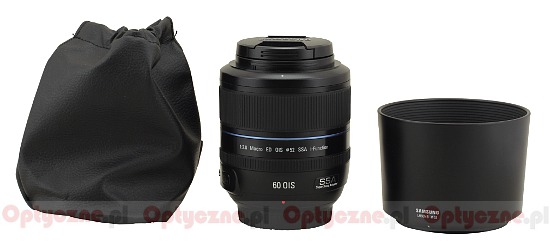 |
Stabilization
The Samsung 2.8/60 is equipped with an optical image stabilization system, small wonder we decided to test its efficiency. In order to do so we took several dozen photos with the stabilization switched on and off, in the range from 1/125 to 1/2 of a second. Then we measured the percentage of fuzzy photos and presented it as an exposition time graph, expressed in EV (where the 0 EV point is an equivalent of 1/100 of a second).
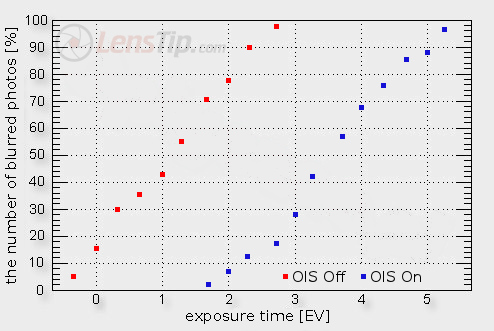
The measure of the efficiency in our tests is a maximum distance between two curves. In the case of the Samsung 2.8/60 it amounts to 2.5 EV. It is not a value which can bowl you over – more and more lenses, brand name or otherwise, can reach as much as 3 EV and the best instruments get even to 4 EV. Compared to that the Samsung doesn’t fare well but, on the other hand, you can hardly complain about a 2.5 EV level stabilization – it’s better to have it than not to have it at all.




